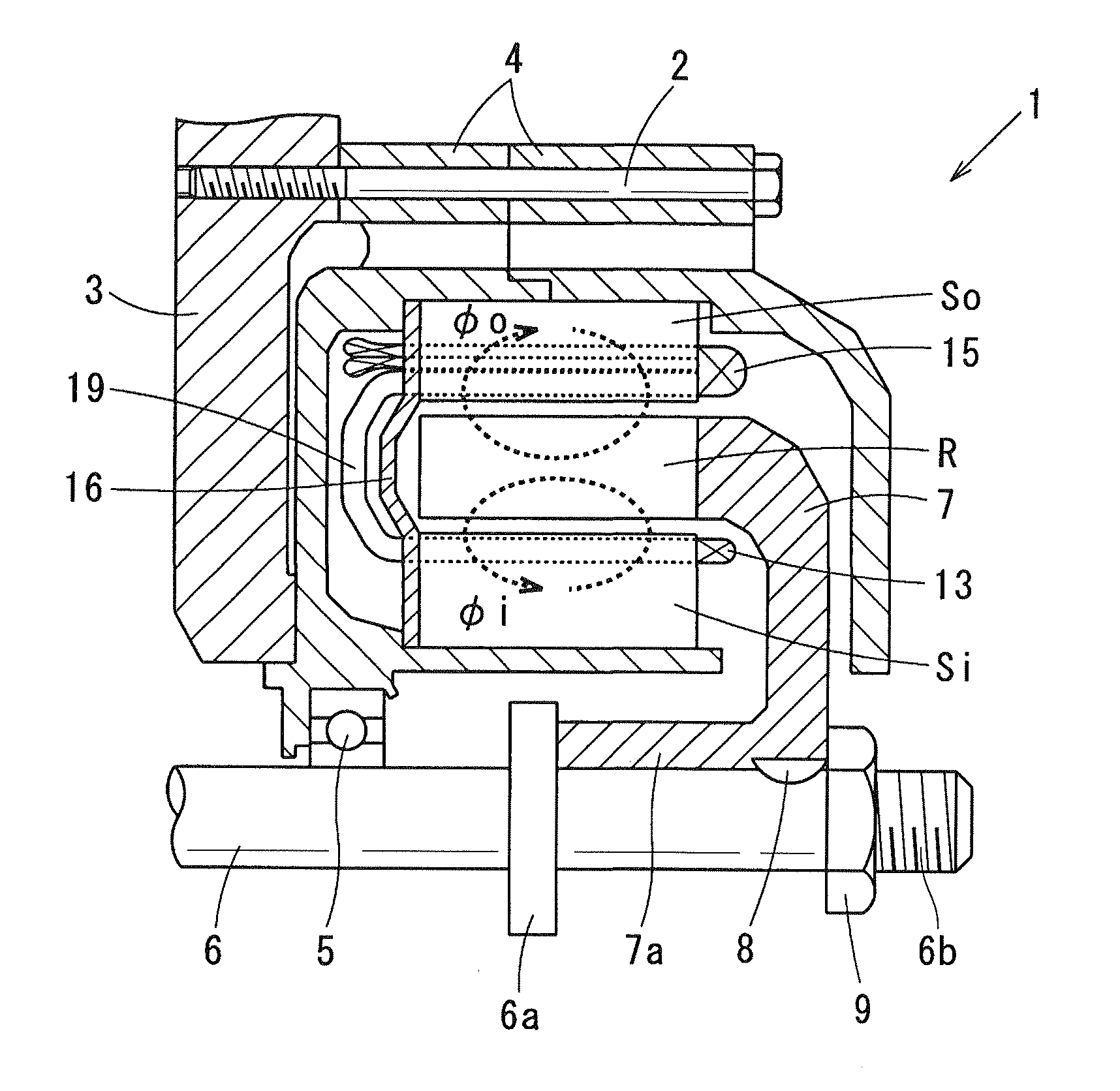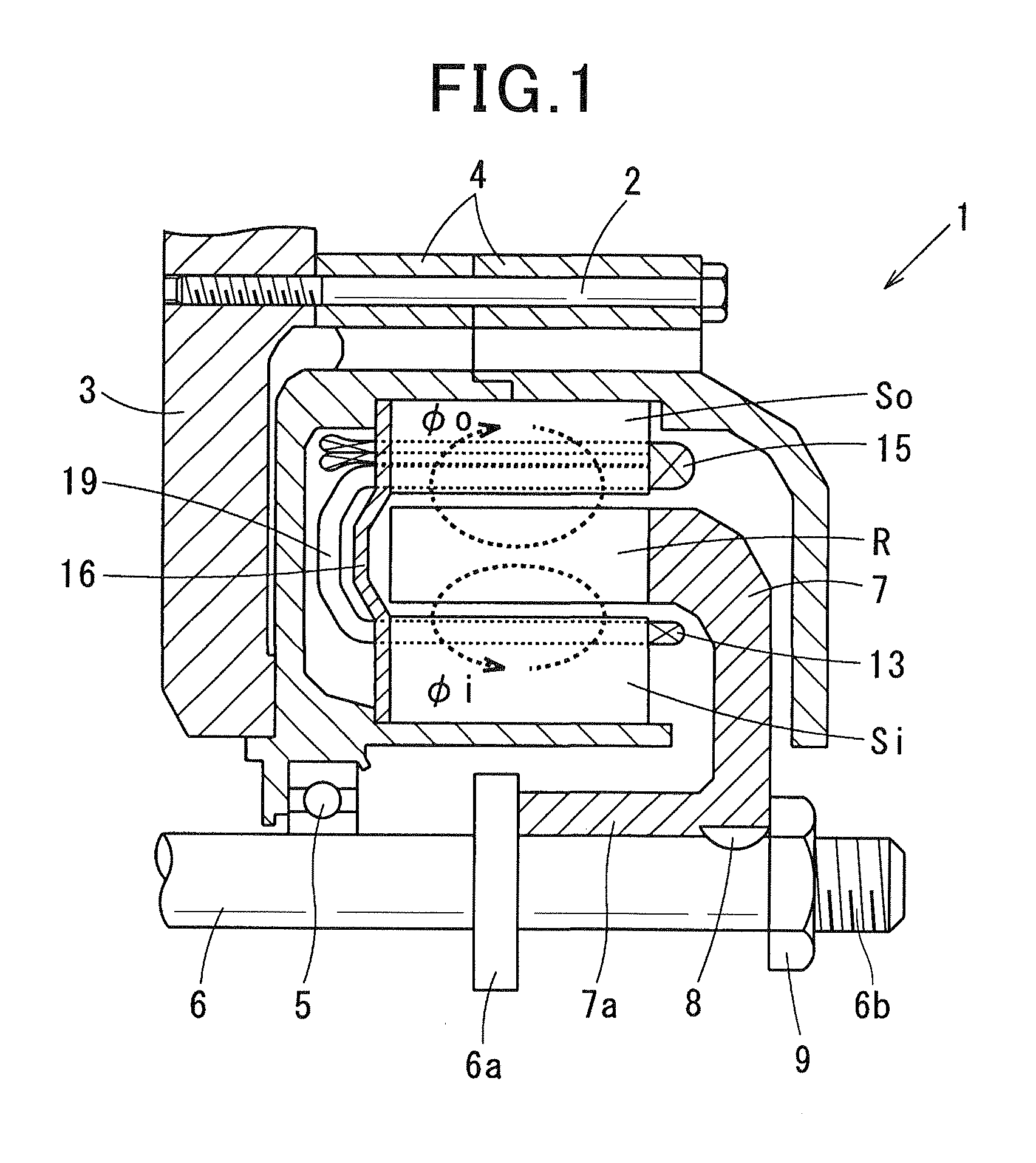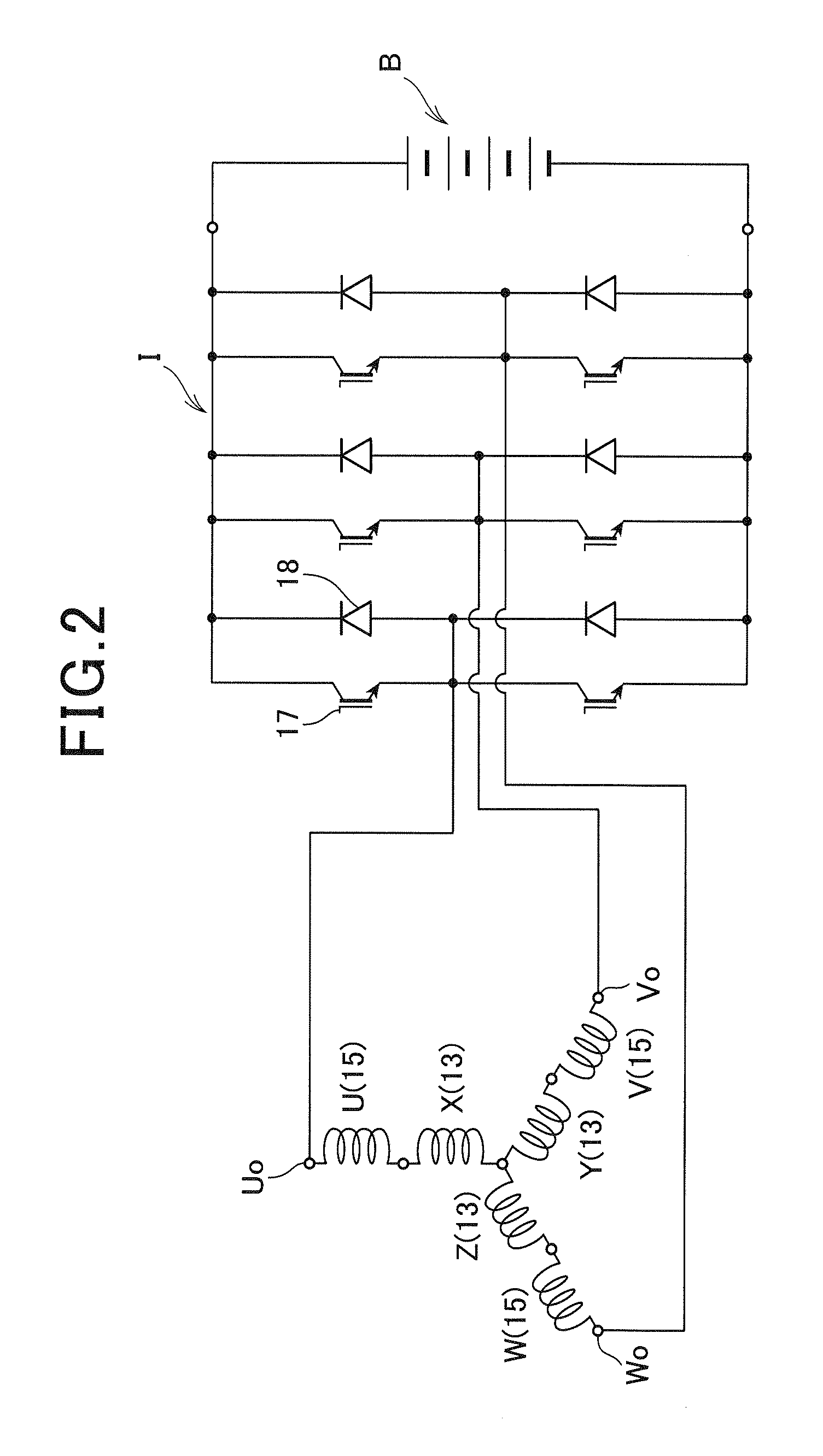Double-stator motor
- Summary
- Abstract
- Description
- Claims
- Application Information
AI Technical Summary
Benefits of technology
Problems solved by technology
Method used
Image
Examples
first embodiment
[0057]Referring to FIG. 1 to FIG. 3, (a) and (b) of FIG. 4, a first embodiment of the present invention is described. FIG. 1 is a general schematic diagram illustrating a double-stator motor 1 according to the first embodiment. As shown in FIG. 1, the double-stator motor 1 includes a housing 3, a motor case 4, a shaft 6, an annular rotor R, an inner stator Si and an outer stator So. The motor case 4 is fixed to the housing 3 via a through bolt 2. The shaft 6 is rotatably supported by the motor case 4 via a bearing 5. The annular rotor R is connected to the shaft 6 via a rotor disc 7. The inner stator Si is arranged on a radially inner side of the rotor R and fixed to the motor case 4. The outer stator So is arranged on a radially outer side of the rotor R and fixed to the motor case 4. The rotor disc 7 is made such as of non-magnetic SUS (special use stainless steel). The rotor disc 7 includes a cylindrically shaped boss 7a at a radially center thereof. The boss 7a is fitted to the ...
second embodiment
[0078]Referring now to FIG. 11, (a) and (b) of FIG. 12, hereinafter is described a second embodiment of the present invention. In the second and the subsequent embodiments, the components identical with or similar to those in the first embodiment are given the same reference numerals for the sake of omitting unnecessary explanation. FIG. 11 is a partial cross-sectional view illustrating the rotor R, and the inner and outer stators Si and So. (a) of FIG. 12 is a diagram illustrating the shapes of the inner and outer stator windings 13 and 15 as viewed from the axial direction. (b) of FIG. 12 is a side view illustrating the shapes of the inner and outer stator windings 13 and 15. Similar to the first embodiment, flat conductors are used as the inner and outer stator windings 13 and 15. The flat conductors both have a rectangular cross section perpendicular to the longitudinal direction, and have the same cross-sectional area perpendicular to the longitudinal direction. In the first em...
third embodiment
[0080]Referring to FIG. 13, (a) and (b) of FIG. 14, hereinafter is described a third embodiment of the present invention. FIG. 13, (a) and (b) of FIG. 14 correspond to FIG. 11, (a) and (b) of FIG. 12 of the second embodiment, respectively. In the third embodiment, as shown in FIG. 13, the conductors of the inner and outer stator windings 13 and 15 all have the same cross-sectional shape (substantially square) perpendicular to the longitudinal direction, and the same cross-sectional area perpendicular to the longitudinal direction. In FIG. 13 illustrating a partial cross-sectional view of the rotor R, and the inner and outer stators Si and So, hatching indicating cross section is omitted. As shown in (a) and (b) of FIG. 14, no twist is given to the bridges 19 connecting between the respective inner in-slot conductors 15a1 of the outer stator winding 15 and the respective in-slot conductors 13a of the inner stator winding 13. The above configuration is suitable for a motor having the ...
PUM
 Login to View More
Login to View More Abstract
Description
Claims
Application Information
 Login to View More
Login to View More - R&D
- Intellectual Property
- Life Sciences
- Materials
- Tech Scout
- Unparalleled Data Quality
- Higher Quality Content
- 60% Fewer Hallucinations
Browse by: Latest US Patents, China's latest patents, Technical Efficacy Thesaurus, Application Domain, Technology Topic, Popular Technical Reports.
© 2025 PatSnap. All rights reserved.Legal|Privacy policy|Modern Slavery Act Transparency Statement|Sitemap|About US| Contact US: help@patsnap.com



